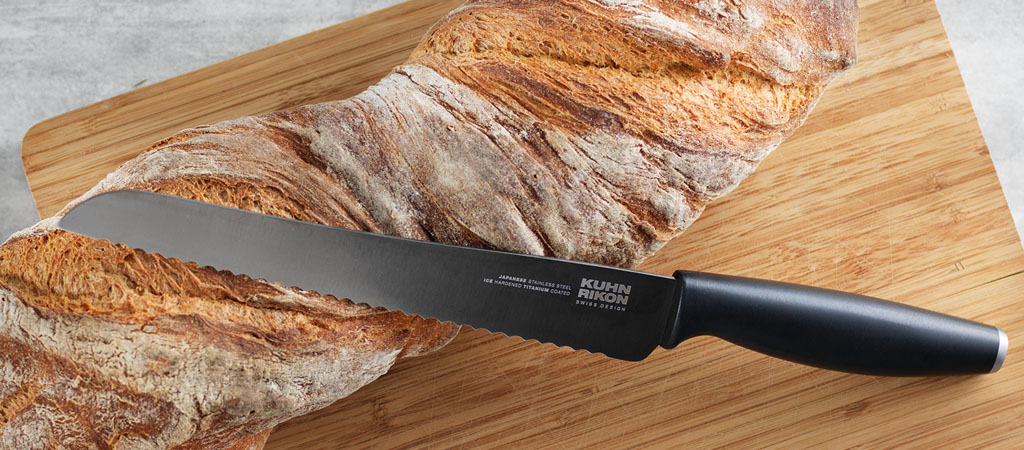Advantages of Serrated Knives

There are some real advantages to using serrated knives over straight edged blades, this is because certain foods are much easier to cut or slice with a serrated blade. Serrated knives are especially useful when making sandwiches – use a serrated blade for cutting the bread and a serrated blade for slicing tomatoes and cucumber. Our popular Sandwich knife, with a serrated edge and broad blade for spreading is especially designed for making sandwiches quickly and effectively.
What is a serrated blade?
A serrated blade is one that has a series of teeth on the edge of the blade. The points of the ‘teeth’ are prominent and sharp. The distance between the teeth can vary; in some serrates knives the teeth are set very close together, so that the blade looks like a series of ‘v’s. In other knives the distance between the teeth can be longer, creating more of a ‘U’ shape between the points.
The points are typically very sharp and the blade between the points will also be sharp. The two parts of the blade are designed for different parts of the cutting. The teeth break through the outer edge and the rest of the blade follows through with the slicing. A serrated knife is used backwards and forwards in a sawing action.
What do you use a serrated knife for?
The most popular serrated knives are bread knives. If you have ever tried cutting bread with a straight edged knife then you’ll fully appreciate the benefits of using a serrated blade. A straight edged blade will have a tendency to slide off as it will be difficult to break through the crust. The teeth on the serrated blade will tear through the harder crust while the rest of the blade will follow and easily slice the bread.
So there are advantages to using serrated knives for certain tasks and advantages for using straight edged knives for other tasks. Every kitchen needs at least one serrated knife – for cutting bread.
Kuhn Rikon serrated knives
Kuhn Rikon knives are made of extra sharp, hard Japanese steel, we have a selection of knives with serrated edges. Choose a longer knife for cutting bread or a shorter, serrated knife for cutting hard skinned fruit and vegetables. Our knives are supplied with a sheath for safe and easy storage.
See a selection of Kuhn Rikon bread knives and other serrated knives.
Another advantage of serrated knives is they need sharpening less often than a straight edged blade. This is because serrated blades are not put through the same demanding tasks as straight edged knives; also the sharp points do the hard work while the indentations glide through the food. Not all sharpeners are suitable for serrated knives, but there is an, easy to use, pull through Kuhn Rikon sharpener that can be used on both straight edged and serrated edged knives.
Serrated peelers
The same advantages of a serrated blade can be seen in a serrated peeler which is ideal when peeling tough skinned fruit such as tomatoes or kiwi fruit – browse a selection of Kuhn Rikon serrated peelers.
You will quickly see the advantages of serrated knives when slicing bread and hard skinned fruit and vegetables, every kitchen needs at least one and ideally two serrated knives.

 UK
UK




